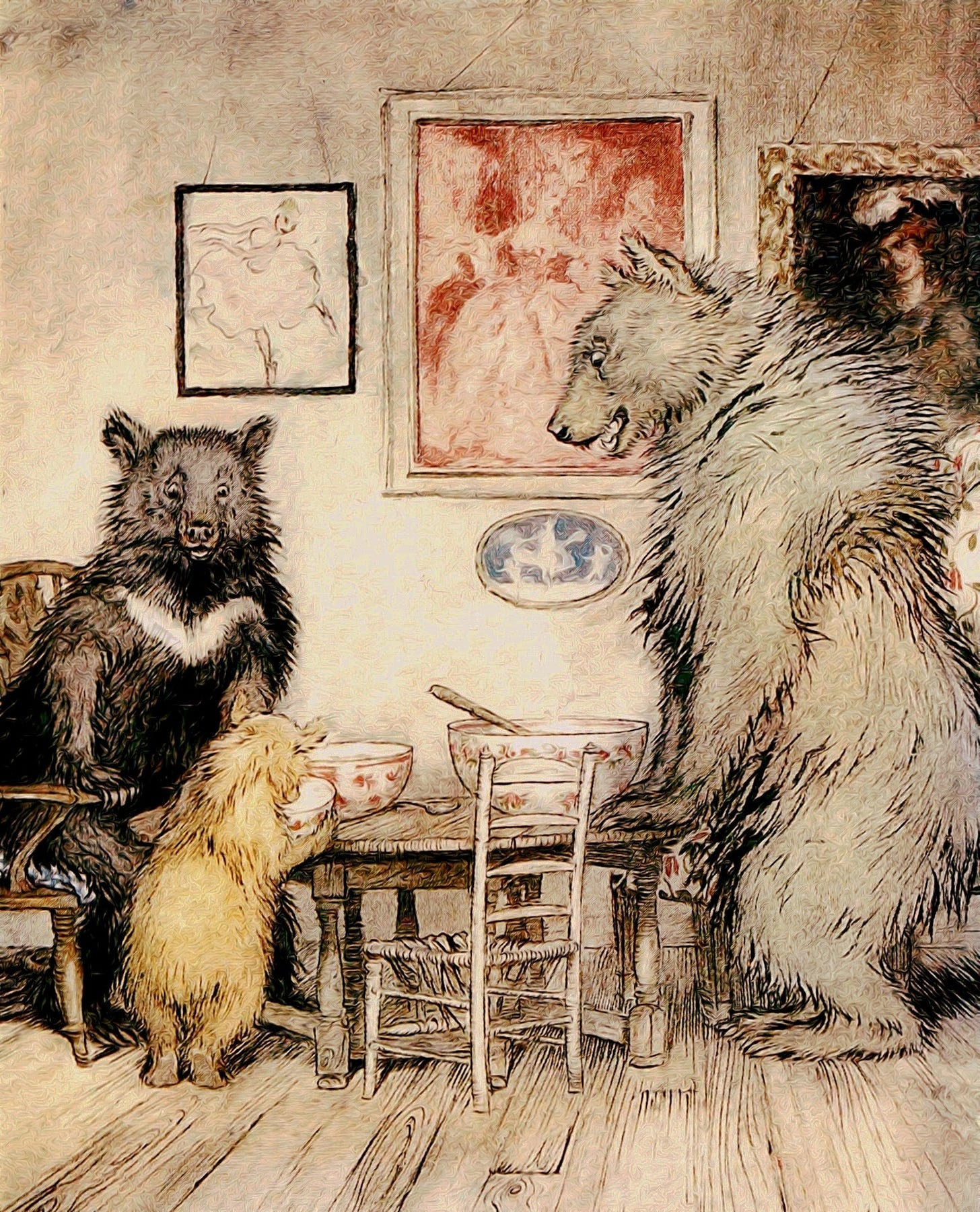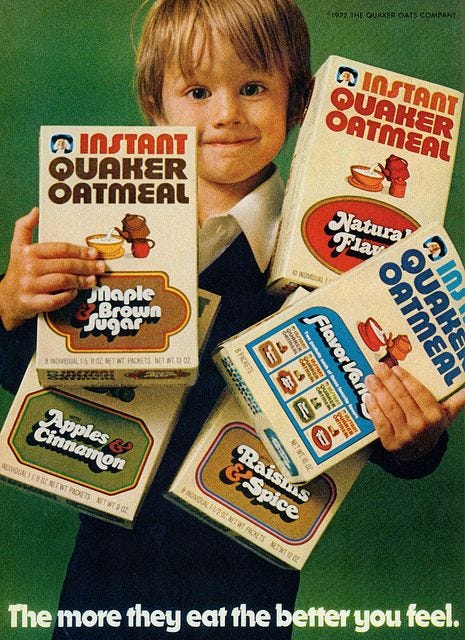There's something so fun about reading new or mixed-up versions of a story that you know well, and kids really get a kick out of it. Tell them the story of Goldilocks that everyone knows, have them tell it to you, and then check out some of the "fractured" retellings together. You'll find lots of suggestions for playing around with this well-known tale in today’s guide.
I have some fun links for you, plus the Three Bears book list, but if you want to get straight to downloading the guide, scroll down and paid subscribers will find it at the end of this email.

“Bears rose to the top of the food chain solely so they could dedicate half their lives to sleep. It’s the world’s most intimidating power nap.” —James Breakwell
Wondering what’s up with the Discovery & Play Guides? Check out two free guides to learn more!
Storytime.
When I lived in Mississippi a long, long time ago, a few friends and I were driving home from a shopping trip in Jackson when one of them jumped up and twisted around in her seat and her eyes got all big and she said, “You guys, I just saw a bear!” Um, crossing U.S. 49. This is a person who would frequently prank call friends of friends and ask them questions like, “Do you think Celine really loves René?” She was described by one of her students as “like a cartoon character.” It was really easy not to believe her. The rest of us were 100% certain there were no bears anywhere within a thousand miles and we suggested that maybe it was a big dog. She was insistent.
Twenty years later, I read “The Bear in Your Back Yard” (The New Yorker) and realized that it’s entirely possible she did see an actual bear and I owe her an apology. (I mean, it was probably a big dog, but WHO KNOWS?!)
My mom’s going to ask why I didn’t tell THE bear story, and the reason is that it’s long and best told in person with lots of gesticulating and facial expressions. But I’ll give you the Cliffsnotes. It involves a bunch of my extended family showing up at my uncle’s Montana cabin to find it burgled by a black bear who hadn’t actually left the scene. He held us hostage for what felt like an hour but I was twelve so it was probably more like 15 minutes (I’m not sure what you’re picturing, but the humans were inside and the bear was outside, lumbering around the cabin banging on all the windows and doors trying to get back in for the shrimp he’d left defrosting on the floor.). No one got eaten.
And apparently “bears have been up to these kinds of high jinks for as long as people have been building houses, or maybe since people and bears fought over the same caves.”
More Goldilocks-y things.
➵ In the earliest versions of The Three Bears, the burglar is an old woman, and then in 1850 she was replaced by a little girl called “Silver-Hair.” Which is really just another way of saying “platinum blonde,” don’t you think? This sent me down a bit of a rabbit hole regarding blonde-ness, which is such a strange and fascinating cultural phenomenon that has been going on for centuries.
➵ Have you heard of the “Goldilocks zone”? Apparently we live in it: “Of the 1,780 confirmed planets beyond our solar system, as many as 16 are located in their star’s habitable zone, where conditions are neither too hot nor too cold to support life. Size also matters: A planet that’s too small can’t maintain an atmosphere; one that’s too large will have a crushing atmosphere.” (National Geographic)
➵ I get the impression not everyone loves Calvin & Hobbes as much as my extended family does (I married one of those people who doesn’t get it), but I think they just haven’t tried hard enough. Here, let me help: Hobbes’s version of “Goldilocks and the Three Tigers.”
➵ When I think of the word “porridge” my brain doesn’t really get much further than oatmeal. Or any hot cereal I guess. Cream of wheat maybe. Does risotto count? But porridge is such a fundamental food, it’s no surprise that almost every culture has some variation of it. If you care to expand your porridge horizons, here’s a catalog of 47 porridges from around the world (Taste Atlas), and a brief look at its history (Food for Thought).
5 classic Goldilocks tales + 7 fresh takes.
Do you have a favorite version of Goldilocks from when you were a kid? I cannot for the life of me remember which books introduced me to this story, but based on their publication dates, probably Paul Galdone (lovely illustrations, dry storytelling, not on the list) or James Marshall. This month’s guide includes five takes on the classic story, and seven that give the original a twist.
CLASSIC GOLDILOCKS
Goldilocks and the Three Bears by Caralyn Buehner
Goldilocks and the Three Bears by Valeri Gorbachev
Goldilocks and the Three Bears by James Marshall
Goldilocks and the Three Bears by Gerda Muller
The 3 Bears and Goldilocks by Margaret Willey
GOLDILOCKS-INSPIRED
Gold by Jed Alexander
Hello, Door by Alastair Heim, illustrated by Alisa Coburn
Goldilocks and Just One Bear by Leigh Hodgkinson
Goatilocks and the Three Bears by Erica S. Pearl, illustrated by Arthur Howard
Deep in the Forest by Brinton Turkle
Goldilocks and the Three Dinosaurs by Mo Willems
Goldy Luck and the Three Pandas by Natasha Yim, illustrated by Grace Zong
I’ve linked to Amazon for the sake of convenience, but I love AbeBooks, ThriftBooks, and eBay for finding used copies of books. And of course nothing beats your local public library.
Quotable
“Someday you will be old enough to start reading fairy tales again.” —from The Lion, the Witch, and the Wardrobe by C.S. Lewis
Goldilocks and the Three Bears Guide.
The Three Bears Discovery & Play Guide is full of suggestions for storytelling and retelling, my family's favorite porridge recipe, and a brand new use for gummy bears. There are poems, videos, songs, and games. Hopefully you'll find something here that's not too hot, not too cold, but just right! It’s a PDF, so you can print it out if you prefer to go analog, but the formatting is intended to make it easy to use on your mobile device.






